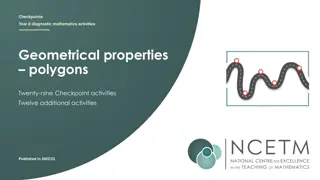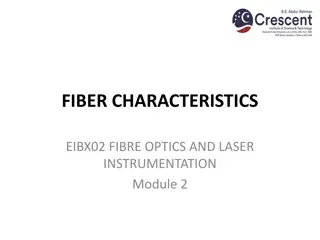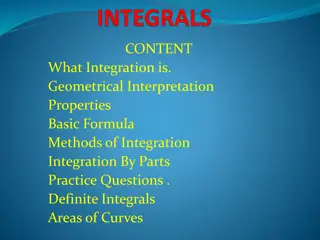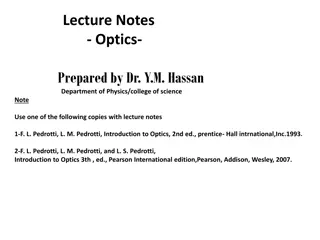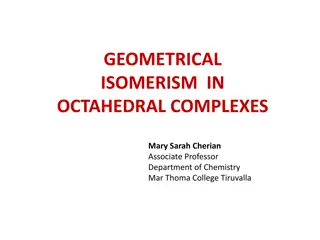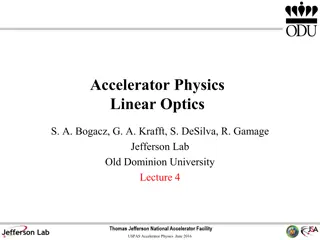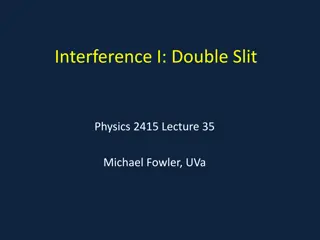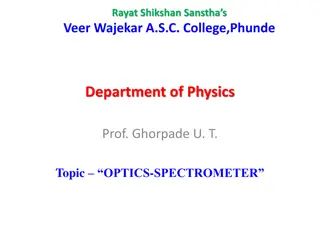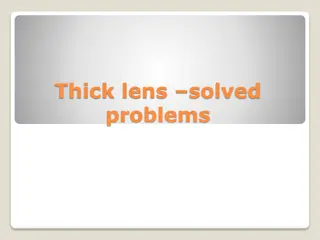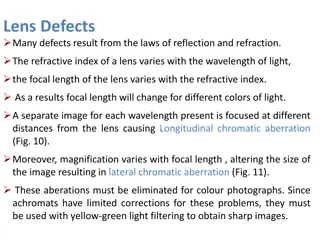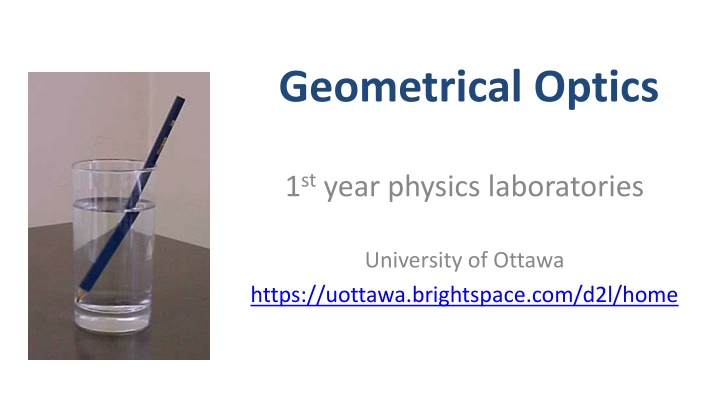
Geometrical Optics in Physics: University of Ottawa Laboratories
Learn about geometrical optics, refraction, dispersion, lenses, ray diagrams, and more in the 1st-year physics laboratories at the University of Ottawa. Explore how light behaves as a ray and interacts with different mediums and optical components.
Download Presentation

Please find below an Image/Link to download the presentation.
The content on the website is provided AS IS for your information and personal use only. It may not be sold, licensed, or shared on other websites without obtaining consent from the author. If you encounter any issues during the download, it is possible that the publisher has removed the file from their server.
You are allowed to download the files provided on this website for personal or commercial use, subject to the condition that they are used lawfully. All files are the property of their respective owners.
The content on the website is provided AS IS for your information and personal use only. It may not be sold, licensed, or shared on other websites without obtaining consent from the author.
E N D
Presentation Transcript
Geometrical Optics 1styear physics laboratories University of Ottawa https://uottawa.brightspace.com/d2l/home
INTRODUCTION Geometrical optics deals with light as a ray that can be bounced (reflected) or bent (refracted) by different mechanisms. Refraction is the bending of light when it goes from one medium to another if the two media have different refractive indices. Dispersion (index of refraction depends on wavelength) is demonstrated by the spatial separation of light into the different colours that it is composed of. Lenses can be used to focus (converge) or defocus (diverge) light rays. Simple optical devices, such as a microscope, can be fabricated using optical components as simple as a pair of lenses.
REFRACTION When light crosses the interface between two media having different refractive indices (ie. between air and water), a light ray will change its direction of travel. Snell s law tells us the amount the light will bend and depends on the angle of incidence (?1), the refractive index of the first material (?1), and the refractive index of the second material (?2). ?1sin?1= ?2sin?2
DISPERSION The index of refraction for light varies with the wavelength (colour) of the light. The index is lower for longer wavelengths and higher for shorter wavelengths. White light is made up of a spectrum of different colours and when it enters a material at an angle, each colour will spatially separate because it will bend by a slightly different amount. When we send white light through a prism, the double bending in the same direction will cause enough spatial separation of colours so that you ll see a rainbow pattern.
LENSES A lens can be used to converge or diverge light that is incident on its surface. We can use the thin lens equation to connect the object (?) and image (?) distances with the focal length (?) of the lens: 1 ?+1 ?=1 ?
RAY DIAGRAMS We can construct ray diagrams using three simple rules. F1and F2are the focal points.
REFRACTION Use a single beam from the laser ray box to demon- strate reflection and refraction of light.
REFRACTION OF LIGHT You will use Snell s law the experimentally determine the index of refraction of a piece of acrylic. Method 1 by calculation (see previous slide). Method 2 by making a graph of incident angle vs. refracted angle (setup shown to the right).
DISPERSION SETUP Investigate the dispersion of white light as you shoot it through a prism. Which colour has the largest refraction angle?
FOCUSING LENS SETUP You can directly measure the focal length of the double concave and double convex acrylic lenses using three beams from the laser ray box.
window FOCUSING AN OBJECT AT INFINITY A very distant object (? ) will have a real image at the focal point of a converging lens (? ?). lens screen
OBJECT CLOSER THAN INFINITY Record a series of ? and ? measure- ments and graphically determine the focal length of the lens. light source lens (10 cm convex) screen
MICROSCOPE SETUP Use two lenses to assemble a microscope to magnify an image. Determine the magnification, M. light source lens (10 cm convex) lens (20 cm convex)
CLEAN UP DUE DATE The report is due at the end of the lab session. Turn off the computer and don t forget to take your USB key. Make sure the laser ray box is turned off. Put back the 4 acrylic pieces and the 360 protractor. Make sure the white light source is turned off. Put the light source, the two lenses, and the screen back on the optical track. Please recycle scrap paper and throw away any garbage. Please leave your station as clean as you can. Push back the monitor, keyboard, and mouse. Please push your chair back under the table. PRE-LAB Don t forget to do your pre-lab for the next experiment! Thank you!

